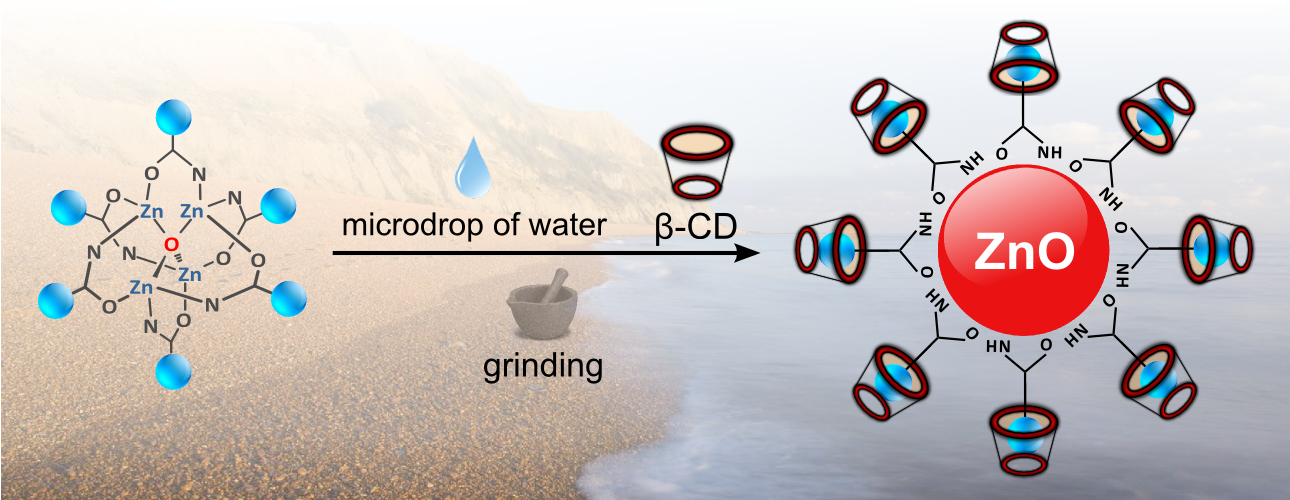Applying mechanochemistry for bottom-up synthesis and host-guest surface modification of semiconducting nanocrystals: A case of water-soluble β-cyclodextrin-coated zinc oxide
Piotr Krupiński,a Arkadiusz Kornowicz,b Kamil Sokołowski,aAnna Maria Cieślak,a Janusz Lewiński,ab
a Institute of Physical Chemistry, Polish Academy of Sciences, Kasprzaka 44/52, 01-224 Warsaw, Poland
b Faculty of Chemistry, Warsaw University of Technology, Noakowskiego 3, 00-664 Warsaw, Poland
DOI: 10.1002/chem.201600182.
First published online 26 Apr 2016.
Mechanochemistry has recently emerged as an environmentally friendly solventless synthesis method enabling a variety of transformations including those impracticable in solution. However, its application in the synthesis of well-defined nanomaterials remains very limited. Here, we report a new bottom-up mechanochemical strategy to rapid mild-conditions synthesis of organic ligand-coated ZnO nanocrystals (NCs) and their further host–guest modification with β-cyclodextrin (β-CD) leading to water-soluble amide-β-CD-coated ZnO NCs. The transformations can be achieved by either one-pot sequential or one-step three-component process. The developed bottom-up methodology is based on employing oxo-zinc benzamidate, [Zn4(μ4-O)(NHOCPh)6], as a predesigned molecular precursor undergoing mild solid-state transformation to ZnO NCs in the presence of water in a rapid, clean and sustainable process.
